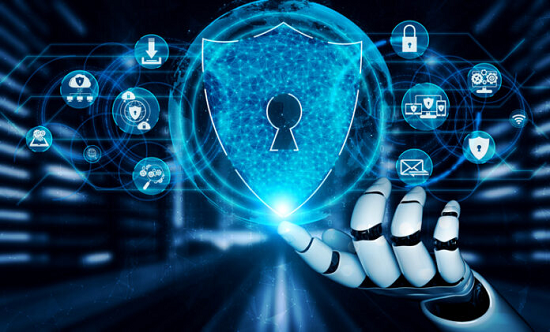Digital intruders are always in the move to find a way and rattle your network’s door. Most of the time, they successfully do so through endpoint devices, which can be an easy backdoor for these cybercriminals. This is where the importance of endpoint security capabilities comes in.
WHAT IS ENDPOINT SECURITY CAPABILITIES?
Endpoints Security are any device connected to a network. This includes:
- Laptops
- Tablets
- Mobile devices
- Smartwatches
- Printers
- Servers
- ATM machines
- Medical devices

Meanwhile, endpoint security is the practice of safeguarding these devices from malicious attacks. A reliable solution with complete endpoint security capabilities can provide you with comprehensive protection from advanced malware and evolving zero-day threats.
Must-have Endpoint Security Capabilities
While there are a number of endpoint security solutions in the market, you’d want to consider the features and capabilities they offer to decide which one will work best for your organization.
Endpoint Security Capabilities to help you with just that, here is a list of endpoint security capabilities you need to look out for when browsing for a complete endpoint security solution:
Endpoint Security Capabilities: Configuration ManagementConfiguration management includes tools that provide a centralized control panel to deal with your other endpoint security capabilities and requirements. This is where you’re able to edit and establish policies, pick up alerts, view audit trails, and determine when users are attempting an override.
Nice-to-have features:
- Defining and Managing Configuration
- Policy Editing
- Scalability
- Exception Management
- Application Control
- Automatic Client Updates
- Live Security Alerts
- Mass Updates
- Remote Software Installation and Updates
Data loss protection (DLP) includes tools that enable system administrators to handle the network and intercept data loss, as well as leaks within all your company endpoints. This capability typically works via encryption, tailored rules, remote access, and user authentication.
Nice-to-have features:
- Endpoint Encryption
- DLP Configuration
- Remote DLP
- Secure Authentication
Device control is where users are able to inspect external devices connected to the endpoint, often via USB. It also oversees encryption of any data that does make it onto an external device. What’s more, device control can also work for offline endpoints or devices that are not connected to the company network.
Nice-to-have features:
- Multiple Device Support
- USB Device Access Control and Monitoring
- Workstations
- Encryption Algorithms
- Offline Support and Forensics
Advanced security approaches like endpoint security response are now needed to fight against the ever-increasing sophistication of cyber threats. EDR tools will take care of your endpoint monitoring to identify suspicious behavior, prompt automatic responses, and gather data for threat analysis, which can help you prevent future attacks.
Nice-to-have features:
- Continuous Monitoring and Data Collection
- Automated Response
Given the continuous automation and advancement of different types of cyber threats, it’s easy for your security team to face some hurdles to deal with them. This is something AI and machine learning can help you with. Ultimately, using such advanced technologies can keep your security infrastructure up to date with the ever-changing threat landscape.
Nice-to-have features:
- Multi-Factor Authentication
- File-System Level Permissions
If you’re implementing a bring your own device (BYOD) program, you’ll need security and protection, specifically for mobile devices. This is where you can allow restriction of application use and execute configurations, such as lock screen timers, password requirements, and restricted camera usage.
This feature also supports virtualized environment security as it provides protection for your virtual machines at the same time.
Nice-to-have features:
- Mobile Device Management
- Mobile Security
- Virtualized Environments
- Full Disk Encryption
Patch management ensures that any security vulnerability is remediated in a timely manner.
Nice-to-have features:
- OS and Applications
- Asset Management and Discovery
- Remote Devices
- Deployment Architecture
- Scheduling Updates
Policy management involves what kind of rules you can set for users and your network devices. Utilizing policy management tools can help you decide who gets access to specific data and what tasks are needed for the authorization to be granted.
Nice-to-have features:
- Device-based Policies
- User-based Policies
- Override Policies
Servers are sensitive endpoints that you’d want to protect against multiple threats.
Nice-to-have features:
- Collaboration Servers
- File Servers
- Gateway Servers
- Encryption Algorithms
- Email Servers
Endpoint Security Capabilities: Threat Intelligence
Threat intelligence solutions collect raw data from various sources about existing or arising modern-day threat actors. This data is evaluated and sorted through to provide real-time updates, help create proactive defense mechanisms and minimize potential risks.
Nice-to-have features:
- Real-Time Threat Updates
- Proactive Defense
Endpoint Security Capabilities: Final Thoughts
Endpoint security is an essential layer to efficiently build a more holistic approach to IT security. When looking for the right endpoint security solution for your company, keep in mind that no two products are created equal. Go with a solution that can provide you with complete endpoint security capabilities that meet your specific business needs.
In that case, look no further than Xcitium. We’ll take care of your endpoint security strategies through our top-notch managed security service. You’ll be able to take advantage of our security team who can help you safeguard your IT systems and infrastructure and allow you to focus more on your business goals.
